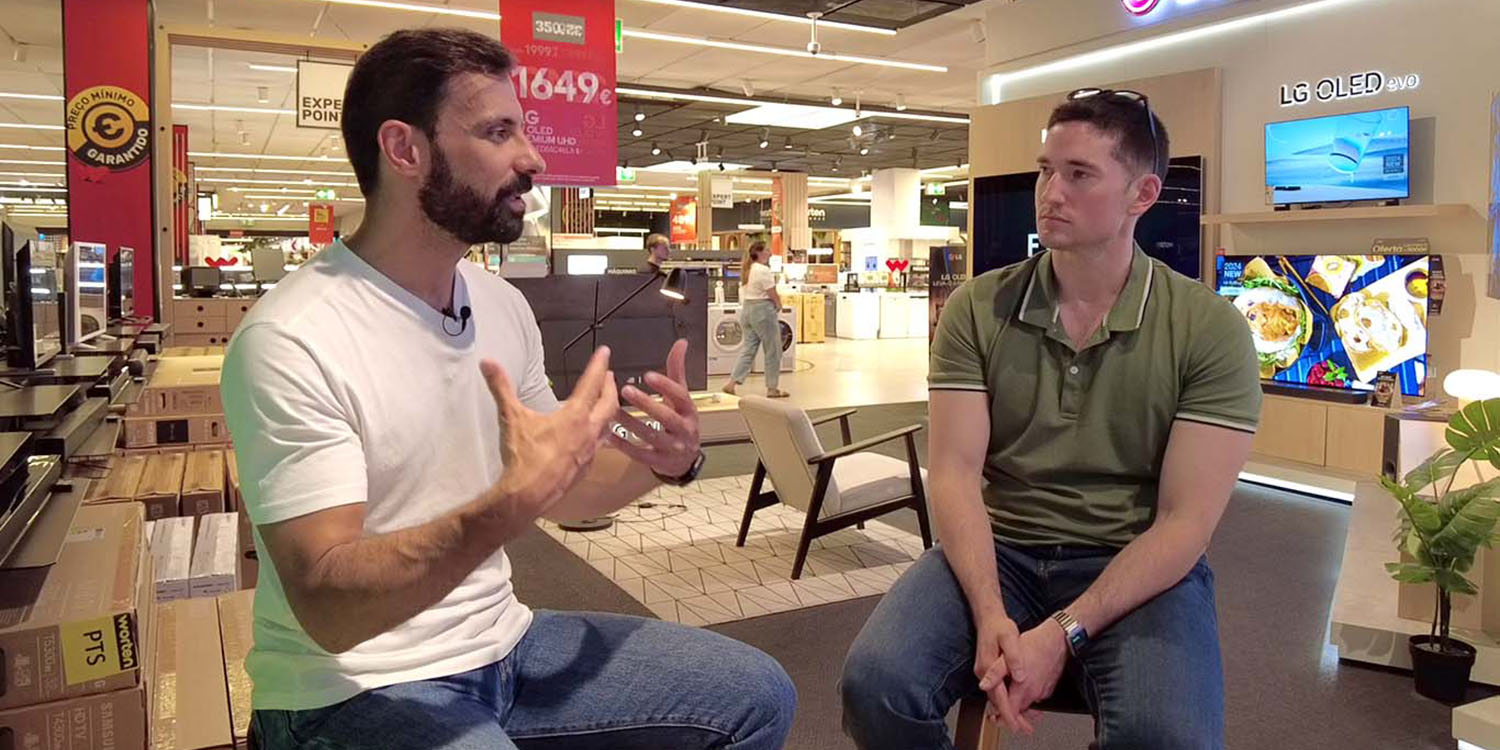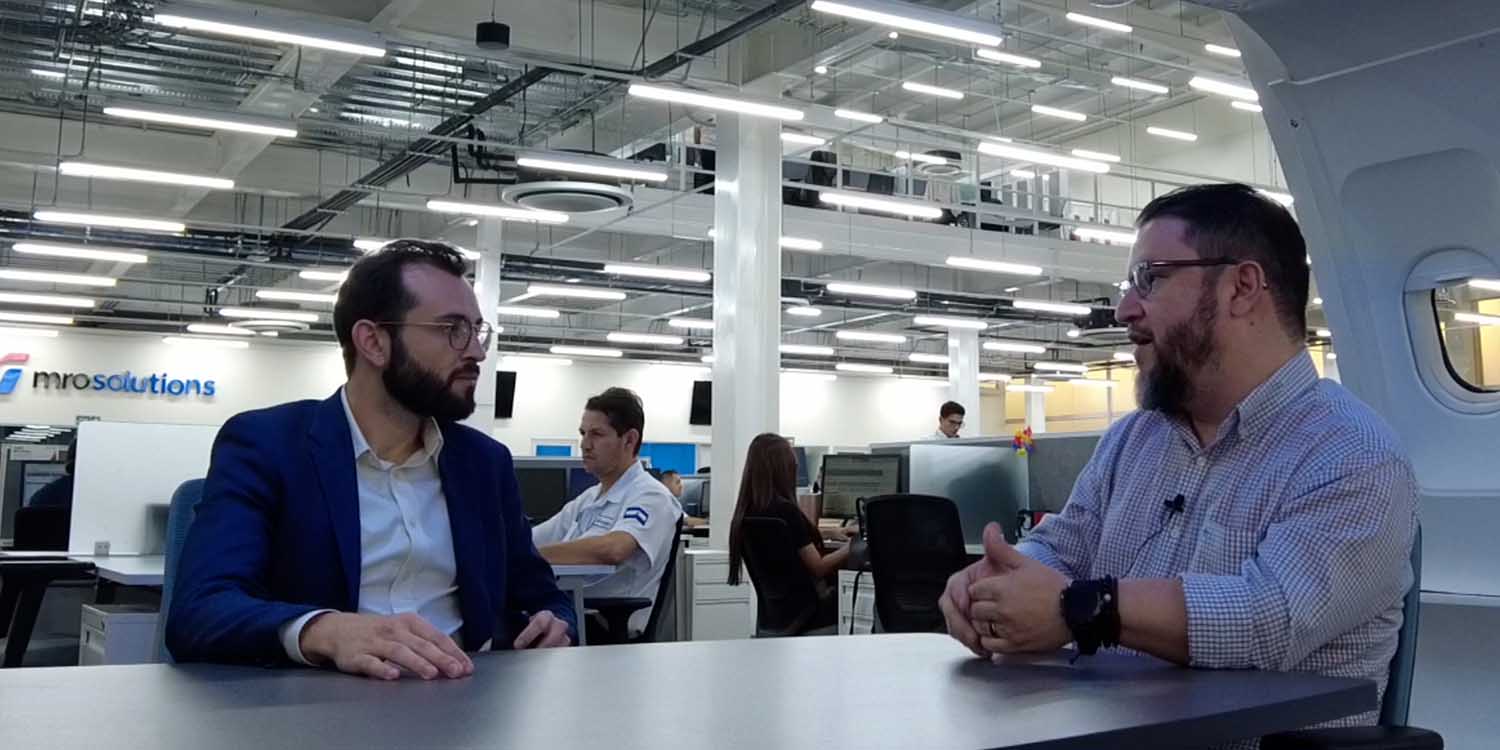Summary
Discover how Tokic, a leader in the Croatian automotive aftermarket, is transforming its operations with AI and data-driven strategies. In this exclusive interview from Athens, CTO Josip Kelava reveals how Tokic is leveraging Lokad’s expertise to tackle complex supply chain challenges and automate critical processes. By prioritizing clean, structured data and integrating a new ERP system, Tokic is paving the way for next-generation innovations, including predictive maintenance and seamless decision-making. With Lokad as a trusted partner, Tokic is not just keeping up with industry trends—it’s setting the standard for the future of the independent aftermarket.
Full Transcript
Fabian Hoehner: Welcome to a special episode of the Lokad TV. I’m joined here by Josip Kelava and as you can see, we’re in a very special location. We’re actually standing in Athens. Josip, tell us a little bit about yourself and why are we in Athens today?
Josip Kelava: Thanks for having me, Fabian. I’m Josip Kelava, the CTO of the Tokic group, and we are actually car parts sellers, the leaders in our industry, with retail shops all across Slovenia and Croatia. Today we are here in Athens at the ATR digital conference, which actually covers the hot topic of AI. As we know, it’s a buzzword now, but it covers AI in the independent aftermarket. That’s the market where Tokic is involved. Today is actually more about the sustainability of our market. The independent aftermarket starts when mostly cars and vehicles reach the end of their warranty lifetime, let’s say like that, and then those vehicles come to the aftermarket. So it is a battle of OE versus independent aftermarket. I mean, it’s called a battle, but yeah, it’s a power game. They have the data, we want the data to work, and now we have to go to the level of the EU commissions to fight for it. It’s a big market, we cannot lose it, and that’s the key role of ATR.
Fabian Hoehner: Okay, well thanks. Then let’s get a little bit into your set while we are at this conference. You actually held a presentation yesterday on, well, the big topic was artificial intelligence. Obviously, it’s a matter, but maybe you can tell us a little bit about what was your take and also concerning the Tokic group, what has been your experiences and your take?
Josip Kelava: Yeah, yesterday it was the AI day, I would say, for the independent aftermarket. There were strong messages sent from the stage: AI is here to stay. We have overestimated AI in the short run, but we underestimated it in the long run. I’m definitely glad that some suppliers started using it because they were very close to the new things. They thought it’s like telematics. Everyone spent a lot of money, energy, and time on telematics, and we failed. Telematics is actually the data from cars sending it to the cloud, whatever any service provider, and we can actually have it play around, do the remote diagnostics, predictions, maybe maintenance to have the data, let’s say, online. We spent a lot of time and effort, and we don’t have results. But the message here is AI is not that type. AI is more like the internet, more like mobile phones. It’s one of those disruptive technologies, and it’s so wide that you can use it on many different levels.
Fabian Hoehner: So what are some of the examples that we’ve seen, that we are seeing?
Josip Kelava: Mostly, I’ve seen they are using it in translations, video tutorials, knowledge bases. That’s really common to many suppliers. We’ve seen the Tokic case with autonomous power drivers, which failed. It was the first one even years before the GPT and LLMs. Then we have a digital transformation team internally, which actually developed RPA, robotic process automation. There’s no AI, that’s just a script, but it was so close to AI. Then we put that cognitive part into the robot, so RPA and AI are very close to each other, and they work very nicely together. We developed our internal AI, but then we said, “Okay, this technology works, we have great success, good results, let’s move on.” Then we moved on to the very specific part of our business, supply chain, and that’s how we actually got to Lokad.
Fabian Hoehner: Yeah, but maybe before we go there, then I’m just going to summarize. So what I’ve seen is basically that we are seeing now a large adaptation of LLMs, so large language models. What are they used for? Image recognition, text recognition, all of these. It was very interesting to see use cases of actually, well, auto-identification of parts, analysis of images of repair tasks, right?
Josip Kelava: Yes, object detection. Thanks for going back to that. Object detection within the other solution is actually a very good use case. When you see a lot of parts, we don’t have any kind of name, you don’t know how to describe the shape, what keyword to put to search. With the translation LLM, object detection is a top use case. In the end, I think we’re seeing it is there. It’s not something in the future, it is there, implemented already.
Fabian Hoehner: Yeah, and well, okay then, going to actually what we’ve done, and this is probably where we see the difference between, I want to say, somewhat simple text and image interpretations to supply chain. We talk about wicked problems, so the problems that we’re resolving, purchasing allocation, have lots and lots and lots of layers. So it’s not one structured problem but many implications. Can you tell us a little bit from your perspective? I mean, it’s been two years that we’ve been working together, and well, about that project, what drove it and your feelings about that?
Josip Kelava: Yeah, I mean, that’s a really specific topic because it has many layers, and then you have to tackle one by one. It wasn’t easy to implement, it wasn’t easy to work before, but we spent a lot of resources to handle all these parts, ordering, replenishment, yard management, to have everything from the back order, invoicing, gross yard. So a lot of resources were done to have that process tight.
Fabian Hoehner: And when you say resources, I’m assuming you mean just humans, human resources?
Josip Kelava: Yes, and time. Time is money. Definitely, it was a project internally. We had some know-how from before, then we had that in analytics, we moved to stock, we had some software which actually held us alive before the implementation of Lokad. You know the story, but it was really hard to have that all covered in a simple way because it’s not simple about those layers I mentioned before. I can talk about the results, I can talk about the checkpoints, but I’m really glad that we have narrowed it down to one kind of solution, one proven solution that works, and there are not as many headaches as there were before. So thanks for that.
Fabian Hoehner: That’s a beautiful summary of basically getting rid of headaches and of application. We had many discussions about what is AI, and from our perspective, without going into the details, most people refer to it as the LLM, the large language models that are coming up. But what we are seeing is there’s obviously what we’re talking about is high-dimensional statistics, and we’ve been using many of these approaches. The question is really, what is the goal? What we are seeing is when we talk about this idea of AI, it’s about automating processes, making human lives easier, being quicker, getting rid of Excel in the supply chain.
Josip Kelava: It is.
Fabian Hoehner: And well, maybe one aspect to underline for that would be the data aspect. Let’s just briefly talk about what the data topics have been for you in the last years and what is the future of that.
Josip Kelava: So data is crucial in our time. Everybody says data is the new gold, and I really think it is. To start work with RPA, we have to have data hygiene, so we have to structure it. People didn’t understand that we are spending so much time to have some structured data so we can work on it. Thank God we have a business intelligence team, they understand, they work with us. We spend a lot of time on data cleaning because everybody knows about input-output results. When we talk about garbage in, garbage out, when we talk about the data, it’s very good that actually the executives realized that we have to spend more time on the data. We established a master data management team because it’s a competitive advantage. If you have data well done and your systems are communicating with clear and well-structured data, you’re more competitive in what you see on the market with the other players who are not. So it’s actually a change of the mindset regarding the data structures. It follows up with a project that we are in the middle of, and we are implementing the new data warehouse in the Tokic group parallel with the ERP. So we will have, in one or two years, let’s say if we zoom out, we will have a new ERP, new data warehouse, and it should work perfectly when the master data management team covers the structure and the clean data.
Fabian Hoehner: And I do remember part of our inventory project was also a long stretch of what I always say data interpretation because data is just data. It’s not what it’s there, but it’s what’s the right interpretation. We’re going to talk to Elliot about that, who was leading the implementation, I know.
Josip Kelava: Yeah.
Fabian Hoehner: Maybe to finish up a little bit, what’s the future looking like? What are the big projects for 2025, 2030? Where do you see yourself and Tokic going from your perspective as CTO?
Josip Kelava: Definitely now we are focusing ourselves, our people, team, and the whole company on the new ERP, which we are in the middle of implementation. It’s a big, it’s a core system, and we have to align the processes with the other company. We brought the Bartog Slovenian. It’s not only Tokic. We have a Slovenian company we acquired four years ago, Bartog Tire Specialists, and definitely we are sending our knowledge and know-how for the car parts and taking their knowledge and know-how for the tires. So it’s compatible. They have a different system, they have different processes, and we have to align it to go on the same ERP system.
Fabian Hoehner: Yeah, and not only ERP but also inventory.
Josip Kelava: Exactly. There is a warehouse management system, there are a lot of peripheral softwares and services like yours as well, which are working with our ERP, with our processes in Tokic and now in Bartog. So if you can imagine how many of them are there, that’s a battle we are now fighting for the new ERP, for the processes to align within the two countries, within all these 130 shops across the countries. As I mentioned, the data warehouse is already on the field, but you asked me for the future, and definitely that’s part where I want to go. That’s why we are doing all these things so we can play with the data, with well-structured data, with the data warehouse and the good ERP system. We would like to leave that AI really when you have all that sorted out. You have clean data, you have all the possible systems. We can play with predictive maintenance, we can do better supply chain, we can do better reports, we can do decision making much more easily. It’s a whole science behind the data. We want to go there. We know it’s there, we don’t know the details, but we are pretty sure that we have to have the infrastructure to deep dive.
Fabian Hoehner: Well, I mean, we are happy to accompany you on that journey. From my side, Josip, thank you for your trust, thank you for your time today.
Josip Kelava: Thank you for having me. It was a pleasure. As a CTO, I would like to thank you for your effort and for your contribution through the years we have been working together. And as well, here in Athens, you left an impression on me and the other guys. Thanks for that.


